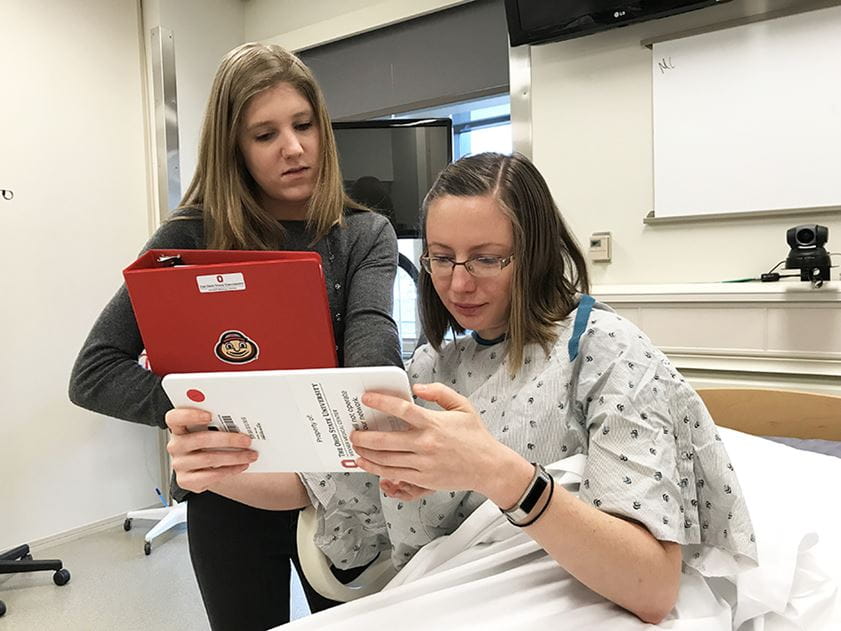
CATALYST Executive Director, Ann Scheck McAlearney, ScD, MS, cited as inpatient portal expert in Washington Post article
By Tyler Griesenbrock
CATALYST scientific editor
Published April 22, 2019
Ann Scheck McAlearney, ScD, MS, the Executive Director of CATALYST – the Center for the Advancement of Team Science, Analytics, and Systems Thinking in Health Services and Implementation Science Research in the College of Medicine at The Ohio State University – recently provided her expertise in an article for the Washington Post.
The story, headlined “For hospital patients, bedside tablets and apps are providing some control over care,” explores the growing use of inpatient portals as a component of health care. Ohio State is a leader in this space: The Wexner Medical Center was the site of one of the first large-scale implementations of an inpatient portal, bringing Epic Systems’ MyChart Bedside online in 2013.
Inpatient portals offer hospitalized patients and their families access to information about their care, such as test results and upcoming appointments, as well as quality of life tools, such as the ability to order meals. Patients can use the information provided by inpatient portals to take a more active role in managing their health.
Dr. McAlearney, also a professor in the Department of Family and Community Medicine, has authored numerous papers about inpatient portals, including the recent “Empowering Patients during Hospitalization: Perspectives on Inpatient Portal Use,” published in the journal Applied Clinical Informatics.
In the Washington Post article, Dr. McAlearney discussed the increasing acceptance of inpatient portals, both among health care providers and patients; she also acknowledged there is still room for growth, especially when it comes to training.
“We will need to provide more guidance and training to both patients and clinicians about the best way to incorporate system use into the care process,” Dr. McAlearney told the Washington Post.
Increasing the use of inpatient portals as part of health care has the potential to increase engagement between patients and their caregivers, thereby improving the process of health care delivery.
CATALYST faculty members study how inpatient portals affect hospital stays through projects such as the High Tech-High Touch project, which Dr. McAlearney leads. That effort is interested in how training efforts impact patients’ engagement with the portal, as well as how the portal changes communication between patients and their care team members.
For more information about MyChart at Ohio State University’s Wexner Medical Center, visit https://wexnermedical.osu.edu/features/mychart. To learn more about CATALYST, visit https://wexnermedical.osu.edu/departments/catalyst-center.

